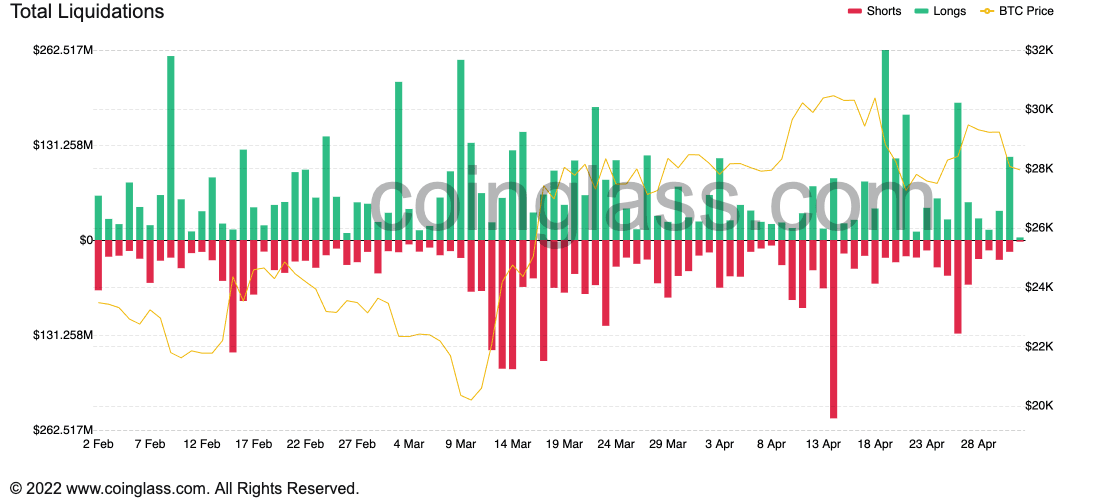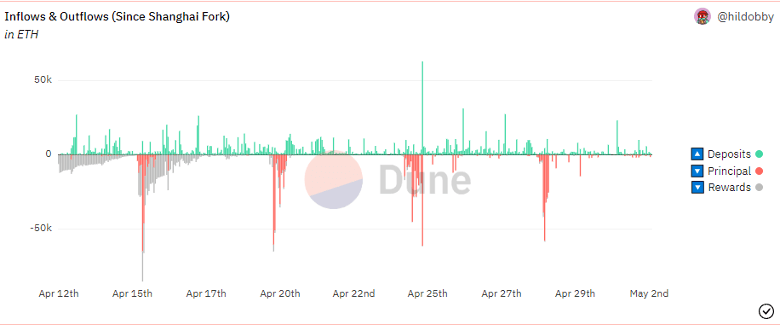A monthly review of what's happening in the crypto markets enriched with institutional research on the most important topics in the industry in cooperation with the Swiss digital asset specialist, 21Shares AG.
Resistance did not go unnoticed against April’s regulatory headwinds. In fact, Bitcoin exhibited some investor appetite following the failure of another US bank, First Republic Bank (FRB), which JP Morgan acquired. Bitcoin and Ethereum increased by almost 3% over the past week. In addition, Bitcoin increased a whopping 15.6% in assets under management, or total value locked (TVL), possibly due to the rapid development of the network, which has witnessed an all-time high inching closer to 3 million NFT inscriptions (ordinals). As shown in the figure below, the biggest winners of last month’s rally are Cardano (21.5% in TVL) within the settlement layers commonly referred to as Layer 1s, Arbitrum (1.15% in TVL) within Ethereum’s scalability solutions referred to as Layer 2s, and finally MakerDAO (1.35% in returns) within the realm of DeFi which saw the sharpest decline in April in comparison to the two other crypto sectors.

Life returns to spot and derivatives markets
April saw the largest liquidations since February, reaching a maximum of $246M and $262M in short and long positions, respectively. April saw a rollercoaster of market reactions as the industry was initially spooked on the back of a false alarm triggered by the Arkham Intelligence data platform indicating that Mt Gox claimants were moving large sums of dormant BTC on the 16th of April, triggering a wave of long liquidations. Bitcoin then aggressively reacted to the news surrounding the failure of First Republic Bank by soaring 7% the following week, a move reminiscent of Crypto’s reaction to the now-defunct SVB back in March.

Shapella doesn't lead to significant Ethereum withdrawals
Contrary to the speculation leading to the Shapella upgrade, which enabled withdrawals for the Ethereum network, users have been predominantly un-staking their rewards rather than their entire principal staked amount, as shown below. This echoes our belief that stakers are long-term believers of the Ethereum network, and as such, enabling withdrawals should merely be a non-event for them. In other words, users will be keen on withdrawing their rewards to unlock capital. Even so, they might re-stake it through the variety of liquid-staking protocols to use the idle capital across the DeFi ecosystem rather than exiting the Ethereum network completely.

Circle launches Cross Chain Transfer Protocol (CCTP)
Circle, the issuer behind the second largest fiat-collateralized stablecoin USDC, announced the Cross-Chain Transfer Protocol (CCTP). The interoperability technology will enable users to natively transfer their USDC from one network to another without encountering the issues inherent in traditional bridges. Mainly, CCTP will alleviate the need for lock-and-mint bridges, which raises many security concerns as the bridge becomes a honeypot for hackers, and replace it with the burn-and-mint technique.
Specifically, the protocol would burn USDC on the originating chain and create a new unit on the destination chain. In addition, the technology will be driven by the availability of native USDC across the several blockchains that Circle originally supported to deploy a native version of its stablecoin on, and is designed to address the issues of fragmented liquidity that arise from having multiple unofficial versions of bridged USDC found across dozen networks.
NFTs fuel bitcoin blockchain
NFT inscriptions on the Bitcoin network have soared to new record highs, surpassing 2.5M, soaring the TVL on the network by almost 16% in April. As seen below, text inscriptions continued to surge in dominance in April, which was not the case in February which saw a monopoly of image inscriptions. This month also witnessed the first time inscriptions amounted to 223K in just one day, April 29. It is anticipated that inscriptions will pile up even more in May, given Stacks’ hard fork and upgrade expected to simplify the experiences of users and developers alike, with the special feature of supporting NFT airdrops to Bitcoin wallets.

Outlook for May









